How to weave your own DP seat.
There is an excelent description in Appendix 1 - Restringing a dursley Pedersen Saddle - by Sue Boon in "A Man Of Genius" - David E. Evans
Some seats were made with a leather cover - or were they?.
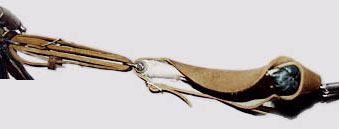
Note the leatherstrap is double
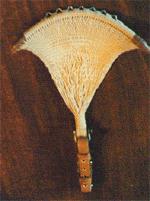 The original seat was wowen as a net. The shape was wide at the rear end and narrow at the front. The material was either silk cord or wiphed cord and some times thin leather cord, 45 yards (40 m) is used. The net made it very soft to sit on. The seat was supported at the front by an adjustable leather strap and could be made tighter or slacker depending on the rider and by 7 springs at the rear, the seat yield to the body weight and gave a more plesant drive.
The original seat was wowen as a net. The shape was wide at the rear end and narrow at the front. The material was either silk cord or wiphed cord and some times thin leather cord, 45 yards (40 m) is used. The net made it very soft to sit on. The seat was supported at the front by an adjustable leather strap and could be made tighter or slacker depending on the rider and by 7 springs at the rear, the seat yield to the body weight and gave a more plesant drive.
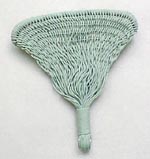 The approx. measurements of the seat. You take two cords and tie them as shown below to the arch.
The approx. measurements of the seat. You take two cords and tie them as shown below to the arch.
Warp them around the shackle and tie them again, this time around the cord it self.
Hide the knots under the cord, when you wrap it.
To weave your seat you need:
Cotton (or what ever you prefer) cords 1 meter each.
A shackle, stainless steel.
An arch of iron or stainless steel 9mm
A fork.
A device to work with when you weave. Easily made of wood. (See below)
A leather strap and a buckle.
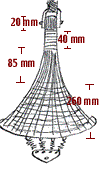
How to tie the knots

You tie the knots in the same way both in front of the seat and around the arch.
The seat below is made by Harry Brookhuis, Nederland. This would give you some inspiration.
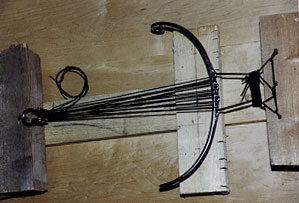
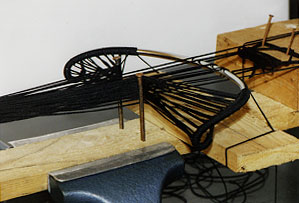
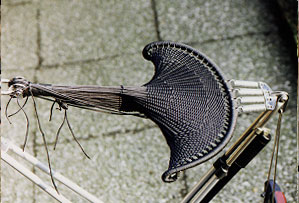
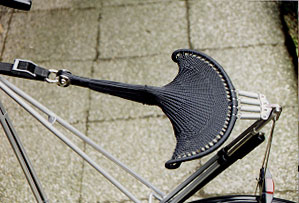
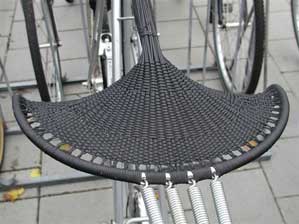
Photos courtesy of Harry Brookhuis, and Ray Grapendaal, Nederland
![]()
Having studied Dursley Pedersen saddles since about 1965, and worked on a great number, I have to dispel the myth that they were woven from silk. (Is he right? Take a look at this ad) There may have been some small element of silk with in the twisted cord, but that is all. Similarly I can find no manufacturers' evidence that leather covers were fitted to the woven saddles at the factory. I would welcome any real proof. It must be remembered that cycles in general, and DPs in particular, were for the rich and well off, and owners could have had leather covers made by the local saddler. Cycles were not available to the working man until Hercules of Birmingham broke the price ring in 1930 and offered single speeds for under £4. That may sound cheap, but it must be remembered that if you had a job - the depression was not over then - you might be lucky enough to be earning £1.50 a week, which had to cover all of your expenditure.
John Pinkerton /Qoute from http://www.foldsoc.co.uk/fsn/fsn049.html
